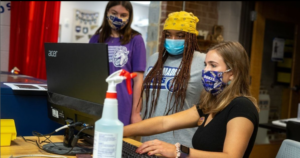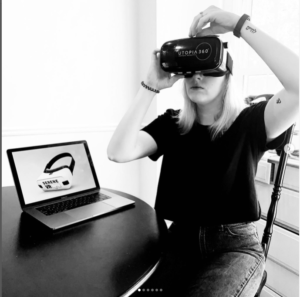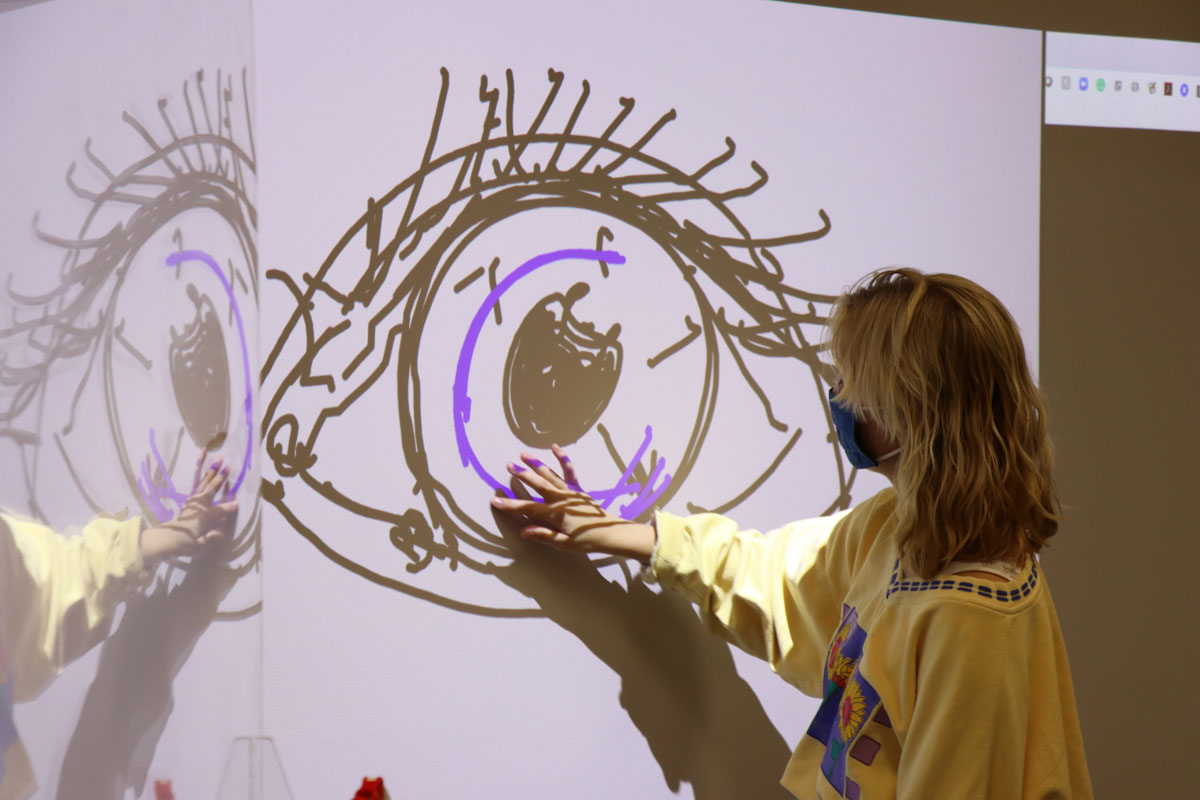An innovation lab is often the hub of, well, innovation for some schools. If you haven’t yet created one of these spaces dedicated to creating and innovating, now is a great time to consider one.

After several years of working in a top-notch innovation lab at James Madison University in Virginia and being the co-founder of the JMU X-Labs, I have seen firsthand the amazing discoveries a group of students can have when they decide to take on a real-world problem and then are given the resources and technology to help solve it.
We created the X-Labs space back in 2015 as part of a program in which an interdisciplinary team of students worked to solve “wicked” real-world problems. Projects have included everything from designing self-driving cars to figuring out how to use drones to deliver beer or inoculate herds of zebras in Africa. Plus, the space has served as part of the university’s esports arena and has housed pop-up maker events, such as creating laser-cut jewelry or making homecoming cornhole boards.
Once you create an innovation lab, lots of people will want to use it. To address these requests and to help students really thrive and to be successful, you will need the appropriate facility, the right equipment/technology and solid partnerships.
Physical space for an innovation lab
Creating a prototype for an innovation space doesn’t require a large facility or fancy equipment. Having a dedicated space for innovation is far more important than the size or specific features of the room. At JMU we used an old TV station building for our innovation lab. It does, however, need to be accessible, available and flexible, or it won’t get much use. I’ve put together a few suggestions.
- Keep it on campus in an area easily accessible to students, faculty and visitors.
- If you have to use a mixed-use facility, do your best to ensure the cohabitants are connected to the mission of the innovation/makerspace. Consider the implications of hours of operation, noise, smells and scheduling, and how these impact others in the zone.
- Make sure you have a high level of control over the space. We provided access to the space at odd hours and were able to add equipment and move things around as needed.
Technology in an innovation lab

As with the physical space, you don’t need the fanciest or most expensive technologies to make an innovation lab work. What’s important is to pick technology that supports collaboration and interaction, without breaking the bank.
- Think about having technology that’s invisible. That means it is easy and intuitive to use without being the focal point itself or a distraction.
- Try before you buy. Many companies will let you test a product to see how it works before you commit to the purchase. Choose quality products from a company that offers great customer service and tech support. No one wants their project thrown off track because the equipment isn’t working.
- Be creative about how you’re using the technology. We created several new ways of connecting existing technology and tech partners to procure amazing tools on a budget. For instance, I recently presented at InfoComm about how we created a low-cost interactive video wall using Epson interactive projectors and ThinkHub software to turn simple, painted drywall into an interactive canvas. No fancy, expensive, flat panel displays or complicated setups are required. An innovation lab should be innovative about the technology used in it, and using equipment in nontraditional ways often can help accomplish your goals.
- Don’t be afraid to fail. Our lab didn’t come together perfectly in the first iteration. Or the second. Or the third. It took five tries and a lot of trial and error to find the perfect combination of technology and equipment to make this lab truly serve its purpose. And it’s still a work in progress.
- Learn from others who have gone before you. At JMU we were constantly sharing our innovation lab experience with other universities. There is no need to reinvent the wheel every time. Check out what other universities have done, and then adjust that to meet your needs.
Partnerships with an innovation lab

Innovation spaces beg for projects with real-world partners. Over the past few years, JMU X-Labs has created an innovation ecosystem of people interested in working together to solve complex, “wicked” problems. Here are just a few examples:
- This summer JMU X-Labs partnered with the Virginia Partnership for Out-of-School-Time, the On the Road Collaborative and Va./Washington, D.C., First Lego League for a Young Entrepreneur Pitch Challenge in which high school students got to pitch their ideas and use our lab to help bring them to life. At the end of the week, each student had a business idea, T-shirts with their logos and a recorded pitch that could be submitted to a national challenge.
- Students worked with sponsor Cave Hill Farms Brewery on a project in which they were asked to develop a system to deliver beer from the microbrewery to customers at the nearby Massanutten resort community. They made a working prototype in one semester.
- The students in the JMU X-Labs’ IoT/drone class partnered with a vineyard for a project to reduce water waste. Agricultural irrigation is the largest single source of wasted water. Applying the wrong amount of water to the wrong area increases costs, reduces productivity and drains aquifers. The students designed and built a working prototype of a drone-based irrigation system in one semester. This solution could help solve that problem!
Other partners have included the Smithsonian Conservation Biology Institute, the cybersecurity firm Endgame, the Federal Emergency Management Agency, the US Department of Homeland Security and the United Way. It’s impossible to state how helpful it is for students to work with company partners. They might even work their way into an internship or a job. At the very least, being able to say you built a system to deliver beer by drone is quite a resume booster!
Flexibility of an innovation lab
If the space is multipurpose, it will continue to be relevant and useful no matter what the scenario. JMU X-Labs was used in several ways.
- Hybrid learning. We created the innovation lab in a way that allowed us to seamlessly bring in remote experts and stakeholders long before the pandemic. It didn’t make the transition to hybrid learning easy, but it made it easier, and students routinely benefited from access to global experts and stakeholders.
- Arts. One of my favorite classes in JMU X-Labs was a collaboration with the James Madison University College of Visual and Performing Arts sophomore seminar. These students challenged us to push the capabilities of our collaboration tools and creativity.
They asked us to do things we hadn’t imagined trying: interacting with the screens, using multiple cameras to create intentional infinity views, and incorporating recorded performances from outside with live performances inside. Each was a fun challenge. Plus, it was just plain fun to bring theater and dance students into a place that everyone thinks is only for technology — and turn them loose to be creative.
- Esports. The location and technology in the space made it a great place to use as an esports arena. JMU launched its first esports team in 2022 using the innovation lab as its home base. This is something we hadn’t considered when the space was created, but that’s the point: Innovation spaces are about always trying something new.
One of the mottos of JMU X-Labs is “innovation happens intentionally.” The transdisciplinary programming provided by the JMU X-Labs teaches students how to innovate. Using their education to focus on the problems they want to solve and learning how to contribute to a team working to solve them will future-proof their degrees and prepare them for an ever-changing world. Having a great space; flexible, intuitive technology; and amazing partners and programming are great ways to do this.
Nick Swayne is president of North Idaho College and is the former director of James Madison University’s JMU X-Labs, which he co-founded and which hosts classes on a range of topics, from unmanned systems to homelessness. The lab uses Epson interactive projectors and ThinkHub software. Swayne serves as faculty advisor for the Stanford University Innovation Fellows and co-founder of the Stanford Faculty Innovation Fellows.
_______________________________
Subscribe to SmartBrief’s FREE email newsletter to see the latest hot topics on EdTech. It’s among SmartBrief’s more than 250 industry-focused newsletters.
